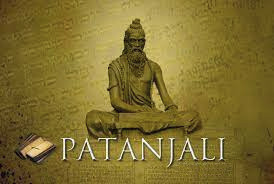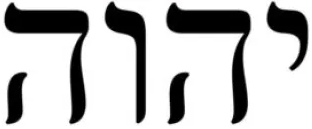Shelly: My Personal Reflections by Jeffrey Gold
Part III: Shelly and Patanjali’s Yoga Sutras
Which maybe in the end became a song
The words have all been writ by one before me
We're taking turns in trying to pass them on
Oh, we're taking turns in trying to pass them on
-- Procol Harum, "Pilgrim’s Progress", 1969
Shelly is an eclectic thinker who bases his own system on the ancient teachings of Yoga, Kabbalah, and Magic. However, his fundamental orientation is Kriya Yoga. He was initiated by Paramahansa Yogananda and is part of the lineage of Babaji, Lahiri Mahasaya, Sri Yukteswar, and Yogananda.
Patanjali's Yoga Sutras
Yoga is an oral tradition that originates in India at least 3000 years ago. It remained oral for centuries before the first synopsis was written down by Patanjali (approximately 2nd Century B.C.E.- 4th Century C.E.). Clearly, the scholars disagree about when Patanjali lived. However, they agree that he wrote the Yoga Sutras. Sutra literally means thread. It is a short, brief aphorism. The Yoga Sutras are a collection of 195 sutras divided into Four Books.

Although Shelly’s language is idiosyncratic, it is clearly grounded in the Yoga Sutras. The first 4 sutras state the vision, the goals, and the aims of Yoga. Patanjali’s famous definition of Yoga (Sutra 2) is "Yogas chitta-vritti-nirodhah". In English, it means
I will now quote the opening (first 4 sutras) of the Yoga Sutras. I have decided not to go with a standard literal translation but instead utilize the intriguing translation and commentary by Swami Savitripriya. She is a Siddha Guru and master of Shaktipat-Kundalini Yoga. In my opinion her Psychology of Mystical Awakening is a brilliant interpretation:
1.2 Mystical Union with your True-Self is attained in stages as you cultivate the ability to voluntarily control the mental process whereby you become able to prevent thought-waves from arising and disturbing the surface of the Lake of the Mind, which is composed of subtle physical matter, so that the mind becomes silent and the surface becomes calm.
1.3 Learning to keep the mind silent and tranquil is the necessary prerequisite for attaining Mystical Union with your all-pervading Conscious True-Self, for when no thoughts are arising from within the subtle Lake of the Mind, no neural firing can occur in the brain to produce brain wave patterns. Then, rather than Consciousness focusing on the wave images that appear on the surface of the Lake of the mind, consciousness remains established in and identified with Its own Eternal, Undiluted, Blissful Essence.
1.4 But, at all other times, when thought-waves are arising on the surface of the mind and producing neural firing in the brain, you, the Conscious-Seer within, become focused on, enmeshed in, and identified with, the wave-images, emotions and ideas that you see appearing on the surface of the mind. Thus, who a person believes him or herself to be is relative to the position Consciousness occupies: if the Center of Consciousness is positioned in the mind, Consciousness believes Itself to be the thoughts and emotions It has become one with; and if the Center of Consciousness is positioned within Itself, It sees the error of Its past beliefs, and discovers Its true identity.
If this is too complicated, contemporary yoga teacher Erich Schiffman summarizes it this way:
Key Points
Here are some of the key points from the Yoga Sutras:
- In ordinary consciousness, we are identified with the thought-waves, modifications, and fluctuations of the mind (mental and psychological processes like thoughts, wishes, emotions, plans, sensations, etc.) For example:
- I am an angry, or jealous, or depressed person
- I am Hindu, or Jewish, or Methodist
- I am an Aries, a Leo, or a Gemini
- I am a taxi driver, a lawyer, or a sound technician
- I am claustrophobic, or bipolar, or ADHD
- I am a Republican, Democrat, Liberal, or Conservative
- ... etc.
- Yoga is a practice devoted to calming and stilling the agitations of the mind (some of which are listed above).
- As the agitations of the mind become more and more quiet and still, one finds his or her True Self.
- As a result of finding one’s True Self, one experiences peace and bliss
- When a person finds his or her True Self, that person begins to identify with the True Self and disidentify with the agitations of the mind.
- The goal is for the Yogi to become less "focused on, enmeshed in, and identified with, the wave-images, emotions and ideas that you see appearing on the surface of the mind" and more identified with the "Conscious True-Self". With that identification with the True Self, bliss and peace arise.
Very Brief Summary
For a very brief summary of Patanjali's Yoga Sutras and the Eight Limbs, click here.

According to Shelly
I will now turn to Shelly’s teachings and we will find a clear and obvious connection between the two sets of ideas.
- For Shelly, when we meditate properly, we are reducing the number of objects of awareness.
- When the number of objects of awareness approaches or reaches one, we find ourselves.
- When we find ourselves, it is the experience of standing off and viewing ourselves and it is unclear whether we are the viewer or the viewed. An inversion occurs (see my previous blog on this website Shelly’s Interpretation of the Four Worlds of Kabbalah for more on this.)
- As a result of the inversion, the power of our meditation increases and we approach God Consciousness. In this state, we experience "bliss" and "the peace that surpasses all understanding."
Patanjali and Shelly
- Both Patanjali and Shelly teach that Yoga leads to deep peace or "the peace that surpasses all understanding" and bliss.
- Patanjali teaches that meditation quiets, calms, or stills the mental processes; Shelly teaches that as one reduces the number of objects of awareness in meditation, we become more and more balanced and peaceful. These are stated differently, but this, it seems to me is the reason: Patanjali is presenting the overall aim of Yoga: to still the agitations of the mind (in order to find yourself). Shelly is presenting, through the Kriya meditation technique, a method to still the agitations of the mind. Shelly believes that practicing Kriya helps us reduce the number of objects of meditation, which enables us to achieve the overall aim of quieting the fluctuations of the mind.
- Patanjali teaches that as the mental processes become still, we find ourselves (our True Self). Shelly teaches that, as we reduce the number of objects of awareness through Kriya, that technique will still the mind enabling us to find ourselves.

The Tetragrammaton
Patanjali is working with one system of thought (Yoga) while Shelly is trying to integrate two systems: Yoga and Kabbalah. During conversation in the mid-1980s, Shelly discussed the Tetragrammaton, the Hebrew four-letter unpronounceable name of God "Y H V H".
Shelly’s view is that the Tetragrammaton expresses the law of awareness I AM AWARE THAT I AM. Of the 4 letters, 2 of the letters are the same (the H or hey in Hebrew). The two heys represent the viewer and the viewed or the two I's in "I am aware that I am". To put it another way, "I" am both the meditator and the object of meditation. The V or vav in Hebrew represents the act of meditation and the Y or yud in Hebrew represents the "all of it."
The important point, in terms of comparing Shelly with Patanjali, is that when we are aware that we are, we move out of the worlds of Pingala and Ida (or the Hebrew equivalents, in Shelly’s view, Asiyah and Yetzirah) and we find ourselves. Shelly’s "finding oneself" is virtually identical with Patanjali’s finding our True Nature or our True-Self. This happens for Shelly in the world of Beriyah or Balanced Self-Conscious Awareness. Shelly says that at this point, we find "bliss" or "the peace that surpasses all understanding." Patanjali says that when we find ourselves, "consciousness remains established in and identified with It’s own Eternal, Undiluted, Blissful Essence". For Shelly, Self-Conscious Awareness has no beginning and no end. For Patanjali, the True-Self is eternal.

The Roles We Play
So, for both Shelly and Patanjali, meditation practice leads to balance, peace, and bliss. The reason it leads to that (for both Shelly and Patanjali) is that when we meditate, we find our True Self. We cease to identify with the roles we play (parent, nationality, mental outlook, sexual orientation, etc.) Shelly loves to quote Yogananda, who often quoted Shakespeare’s line "We are all actors on the stage of life." The exact quote is:
We all play roles in life (teacher, politician, religious leader) and we play those roles so convincingly, we become identified with those roles. Writing about the comedian Jim Carrey, the Los Angeles Times wrote:
In an infamous Stanford University experiment, a group of participants were paid $15 a day in a two-week prison simulation. Some participates played the role of guards, others played the role of prisoners. The experiment had to be aborted early because the abuse of the "prisoners" from the "guards" was brutal. That is how seriously the participants took their roles in a simulation. Imagine how seriously we take our roles in real life.

Identification
The point that Patanjali is making is that we "become focused on, enmeshed in, and identified with, the wave-images, emotions and ideas that we see appearing on the surface of the mind." In Yoga, the goal is for "consciousness to remain established in and identified with Its own Eternal, Undiluted, Blissful Essence."
Shelly would say that we become focused on, enmeshed in and identified with the roles we play and ignorant of the fact that we are Self-Existent Ones capable of Self-Conscious Awareness. As Shelly would say, we need to "get off the wheel and onto the stick". In other words, we need to get off the wheel of the horoscope where we identify with our ego (first house), our possessions (second house), our career (tenth house), etc. and balance our energy straight up and down the spine (the Sushumna).
Acknowledgement
I will end this piece on a personal note with lyrics from While My Guitar Gently Weeps, the beautiful Beatles song written by George Harrison:
I don’t know how someone controlled you, they bought and sold you…
I don’t know how you were diverted, you were perverted too.
I don’t know how you were inverted, no one alerted you.
I look at you all see the love there that’s sleeping while my guitar gently weeps.
I want to acknowledge my gratitude to Shelly, the one who alerted me.